The Best Wild Swimming Spots Across the North East and Yorkshire
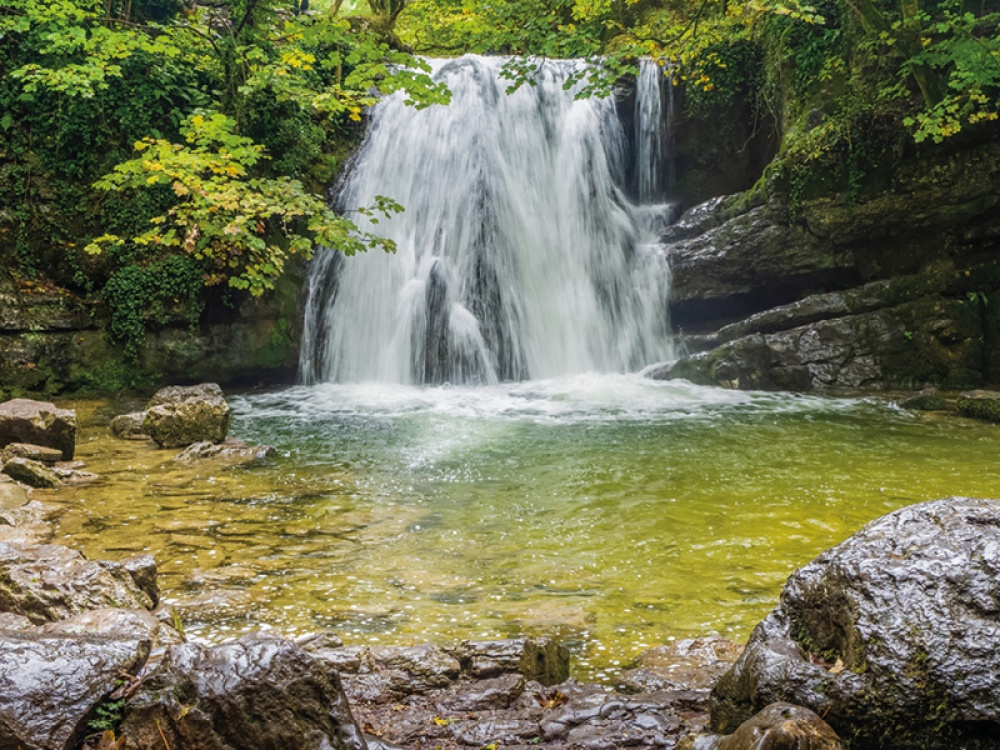
Living North wades in with our top picks for swimming in the great outdoors
Where to Learn
Swimming outside the safety of a heated swimming pool can be a shock to the system in many ways. If you’re keen to have a go, but would prefer to get started in a slightly more controlled environment, this is where to go.

North East Wake Park, Bishopton Lake, Stockton
Between May and September, North East Wake Park run bookable open water swimming sessions on their 600-metre course. There are some conditions you need to fulfil before getting into the water, and you need to book online in advance and register on arrival, so make sure you check on the website and are well prepared.
For more information visit northeastwakepark.co.uk
H2oTrails at Sweethope Loughs, Harle
If you would like to get into outdoor swimming, but aren’t sure where to start, H2oTrails at Sweethope Loughs have a great solution. They offer private and group coaching to get you started, at which point you can choose to become a member and attend regular lifeguarded swim sessions. The Lough is also relatively shallow, meaning you should be able to stand whenever you need to, and it warms up quickly on sunny days.
For more information visit h2otrails.co.uk.
VO2 Max Open Water Swimming Training at Queen Elizabeth II Jubilee Country Park, Woodhorn
VO2 Max offer mixed ability open water swimming training sessions in the lake at the QE II Country Park, on the northern edge of Ashington, every Thursday evening from May to mid July. They recommend that anyone who is new to open water swimming join a led group swim around the course, but you are also welcome to do your own session. You will need to register online before attending, and wetsuits are compulsory if you want to get in the water.
For more information visit vo2maxracingevents.co.uk.
The Dales Dipper, Yorkshire Dales and Lake District
Les Peebles is a full-time wild swimming guide who runs individual and group sessions in the Yorkshire Dales and Lake District. He doesn’t teach the skill of swimming itself, but can teach newbies how to swim safely in cold water as well as taking more experienced swimmers out for a day’s swimming, hopping between the best rivers and waterfalls that Yorkshire and the Lake District have to offer.
To book and find out more information visit thedalesdipper.co.uk
Carrine Green Performance Coaching at Pool Bridge Farm, York
Carrine Green is a triathlete and performance coach who runs open water swim coaching for all levels of experience and ability from Pool Bridge Farm in York (see our top freshwater swimming spots). Her Introduction to Open Water Swimming Sessions run on weekends throughout 2024, and will introduce you to the basic skills you need to swim safely and build your confidence in the water.
To book and find out more, visit cgperformancecoach.co.uk
Swim Outdoors, Nidderdale & North Yorkshire
The woman behind Swim Outdoors, Lucy Downes, is a qualified swimming teacher and open water coach, who offers open water introductions, wild swimming experiences (and more) in locations across Nidderdale and North Yorkshire. You can either book a private session with her, or join one of her Confidence Pods, which will equip you with the knowledge and skills you need to start wild swimming safely.
To book and find out more visit swimoutdoors.co.uk
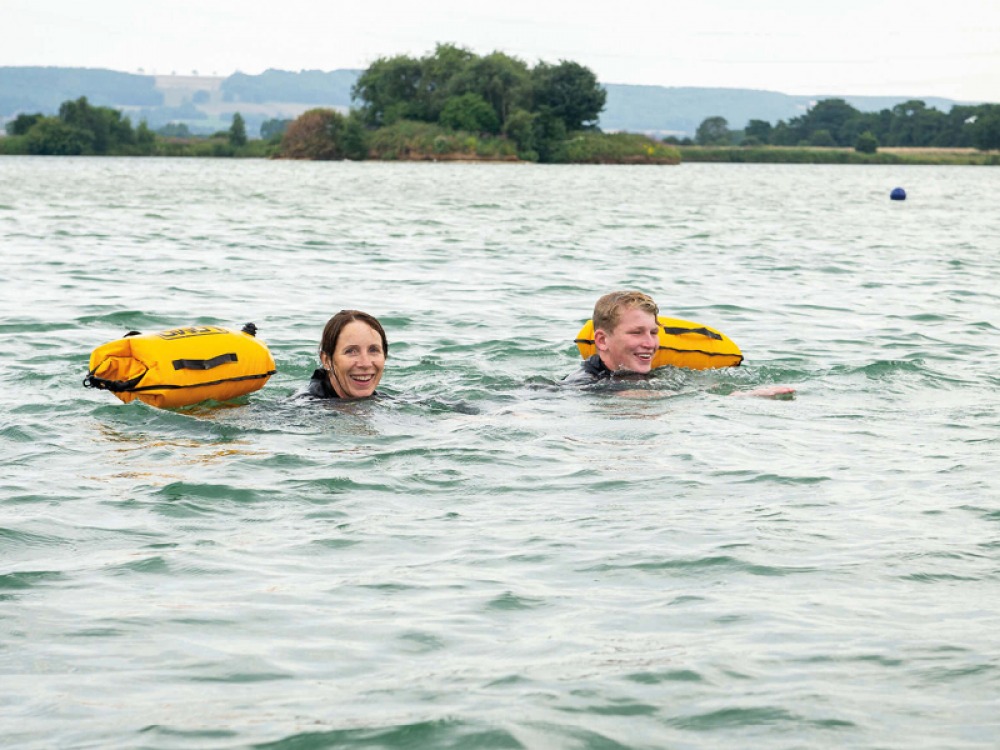
North Yorkshire Waterpark, Scarborough
The lake at North Yorkshire Waterpark has a 250-metre circuit and is 17 degrees celsius on average, which is balmy by wild swimming standards. Sessions start on Tuesday evenings and weekend mornings from March until the end of September, with an additional Thursday evening swim from July onwards.
To book and find out more visit northyorkshirewaterpark.co.uk
Swimyourswim, Doncaster & Rotherham
Swimyourswim run open water swimming sessions at the lake at Hatfield Outdoor Activity Centre in Doncaster and Thrybergh Country Park in Rotherham all year round. Their Introduction to Open Water Swimming Course will run from the same locations between May and September.
To book and find out more visit swimyourswim.com
Blue Lagoon, Womersley
The water at the Blue Lagoon in Womersley is fed by a spring and filtered through surrounding limestone en route, making it wonderfully refreshing. Attendees swim anti-clockwise following a loop marked out by buoys, and there are always trained lifeguards on hand if you don’t feel able to get yourself back to the start. Open water swim sessions are open to book from mid-April (with a discount for members), and they also offer the occasional workshop for beginners over the summer months.
To book and find out more information visit bluelagooners.com
Freshwater Swimming
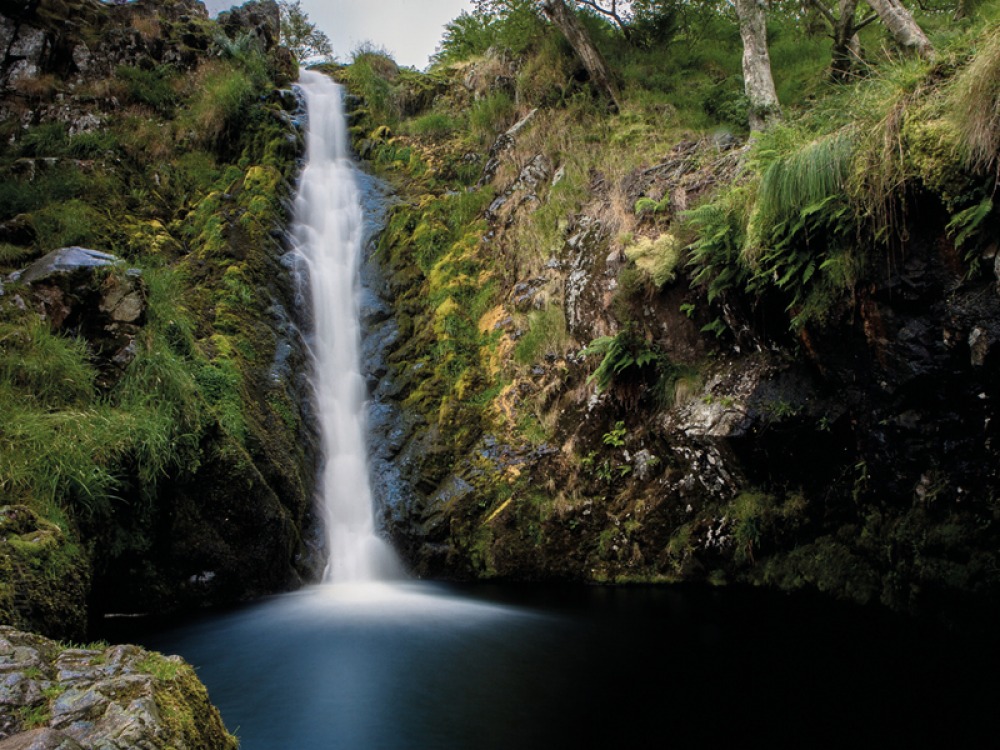
Low Force Waterfall, Barnard Castle
High Force’s more benign sibling, Low Force Waterfall has a relatively calm pool that is swimmable if the conditions are right. The River Tees meanders down its rocky path before breaking into two streams that cascade into a deep pool below. It’s undeniably beautiful, but the water here can be extremely cold and the pool is very deep, so this is a spot best visited when you have some experience.
Featherstone Castle, Haltwhistle
Just a short stroll from Featherstone Castle, a small beach beside the South Tyne marks a lovely and easily accessible spot for al fresco swimming. There is a gradual slope into the deeper centre of the river, so younger or less confident swimmers should be safe paddling at the edge. Whilst you are by the river bank see if you can spot the dippers, sand martins and oyster catchers that also delight in this stretch of water.
Linhope Spout, Ingram
If a beauty spot is what you’re after, it doesn’t get more idyllic than the mossy rocks and woodland that enclose the waterfall and plunge pool at Linhope Spout. Using the route recommended by Northumberland National Park, you will need to walk about one and a half miles to reach the waterfall. There aren’t any shallows, and the pool itself is around five metres deep, so this is best suited to confident swimmers.
Chesters Bridge, North Tyne
Most people visit this patch of Northumberland to see the remarkable archeological remains at Chesters Roman Fort. But once you’ve sated your curiosity for ancient history, we recommend making your way to the shallow rapids at Chesters Bridge. It’s where the Romans bathed as a matter of daily routine and the perfect spot for a dip while exploring the intriguing remains of this collapsed Roman bridge.
Thornton Force Waterfall, Ingleton
At 14 metres high, Thornton Force is arguably the most impressive waterfall along the Ingleton Waterfalls Trail walking route and it is also the most popular for swimming. The trail takes you along a particularly beautiful stretch of the river Twiss and is four and a half miles in total. The trail is privately owned, so there is a fee, but it is well worth it for the spectacular views, wildlife and geological formations in this unspoilt spot.
To find out more, visit ingeltonwaterfallstrail.co.uk.
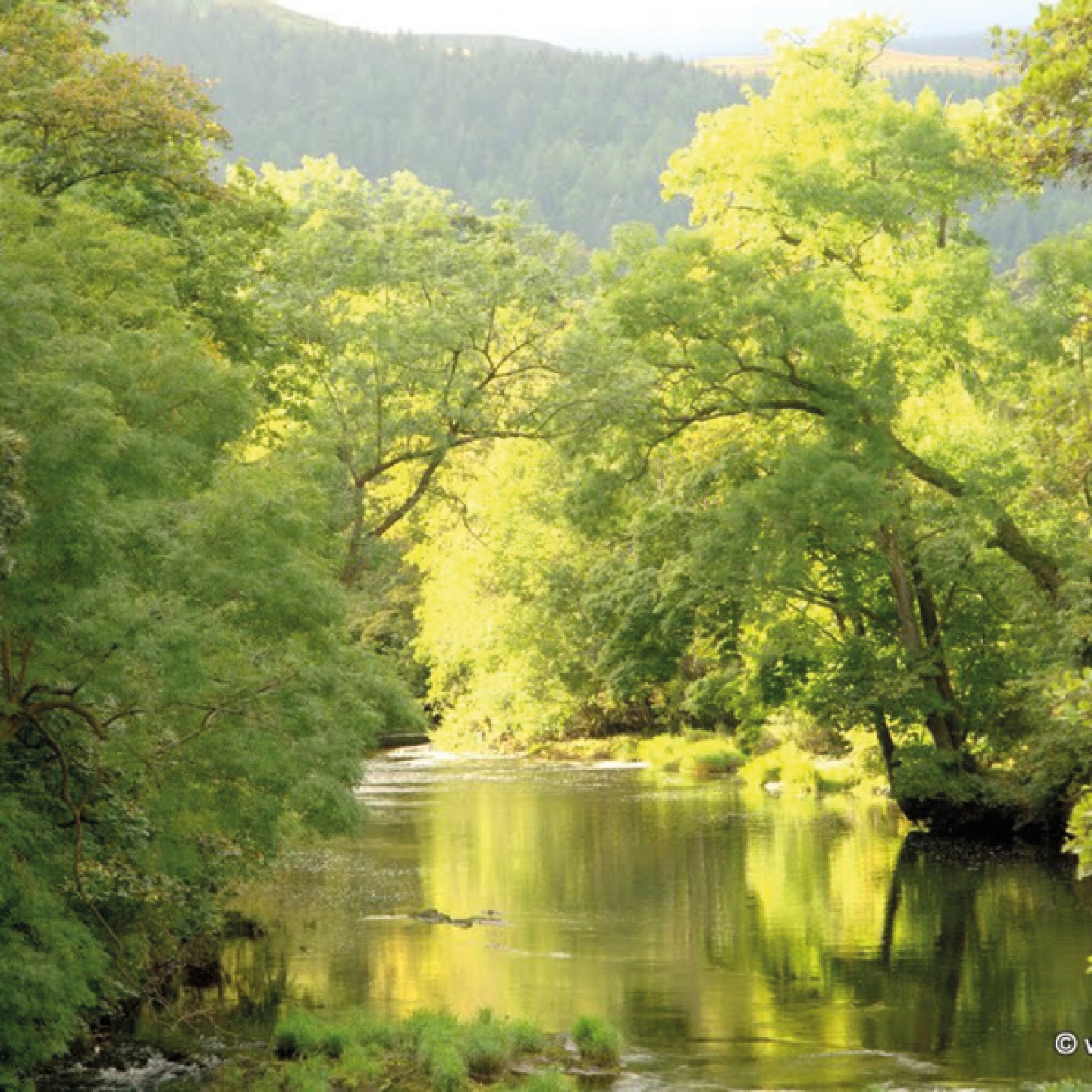
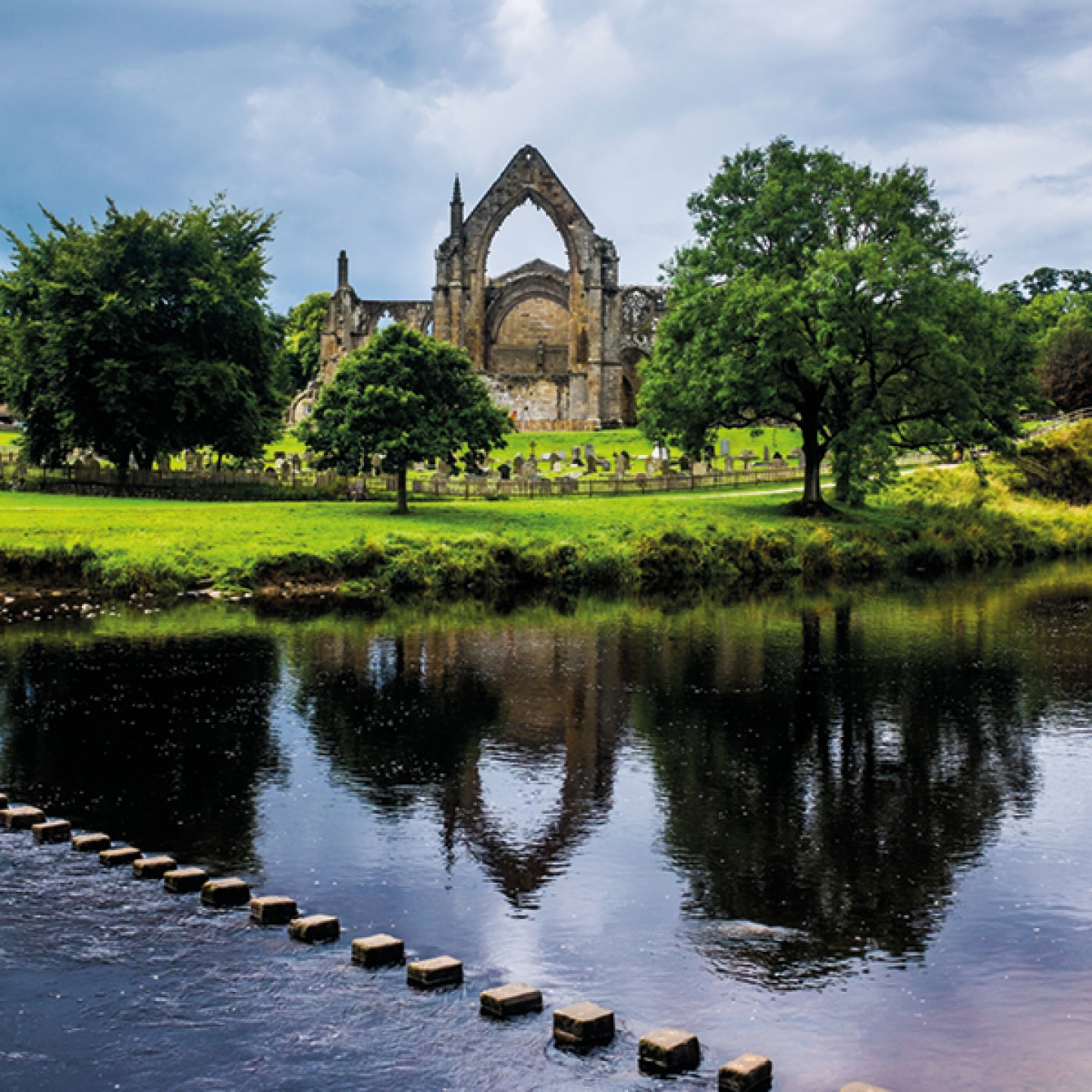
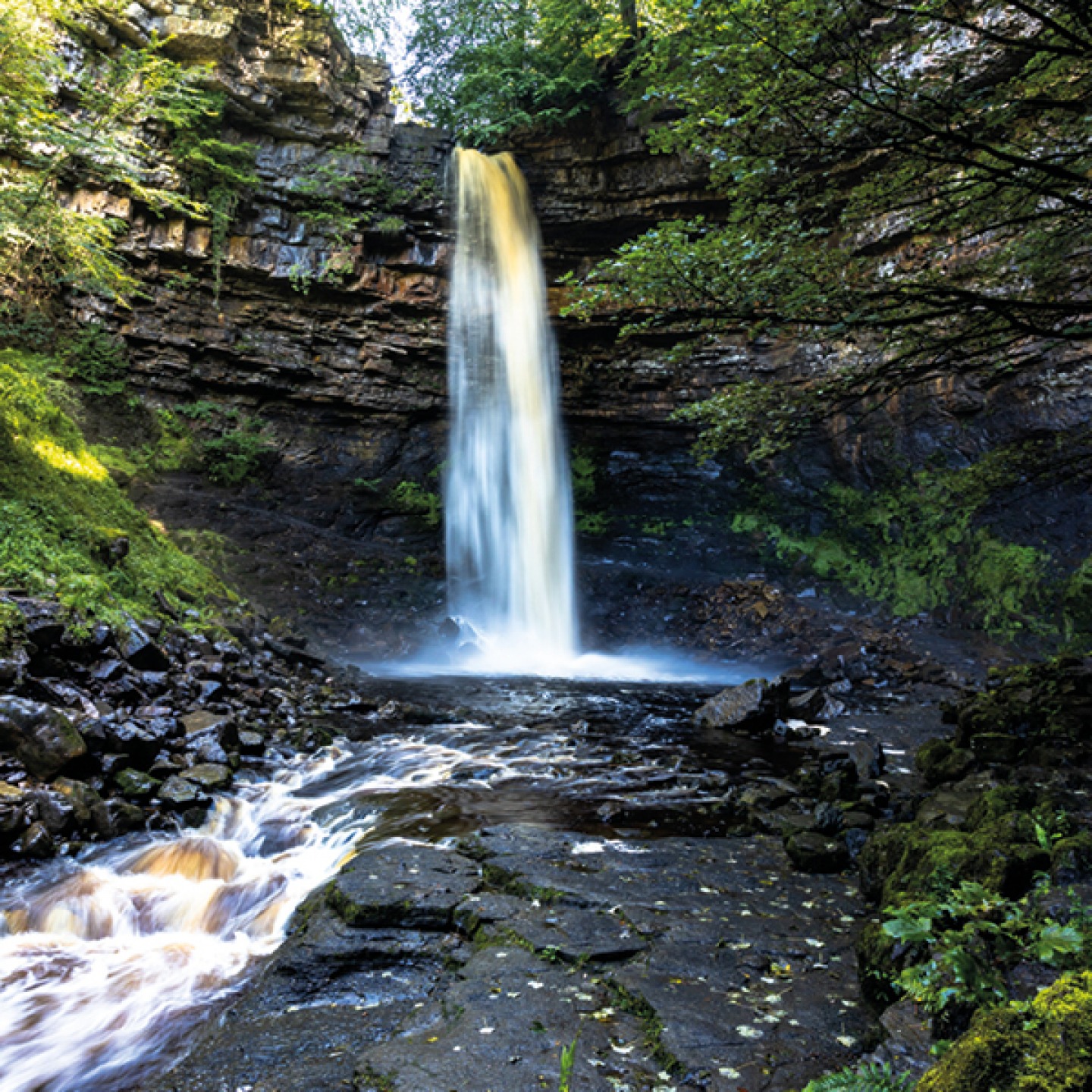
Bolton Abbey, Skipton
Bolton Abbey is a majestic ruin on the banks of the River Wharfe, and a striking setting for a dip in the river. If you’re planning to cool off in the water, you need to head toward the calmest part of the river just along from the bridge, in the pool beyond the stepping stones. There’s even a small sandy beach, and a grassy area perfect for sitting out with a picnic on a sunny day.
To book and find out more, visit boltonabbey.com.
Hardraw Force, Leyburn
As England’s highest drop waterfall (reputed to be 30 metres) Hardraw Force is worth a visit whether you plan to dip a toe in or stay firmly on the river bank. If you do fancy a paddle you will be in good company; Kevin Costner took a steamy (in a strictly metaphoric sense) shower in the waterfall in 1991’s Robin Hood: Prince of Thieves. The waterfall is in the grounds of the Green Dragon Inn, so there is a small fee for entry, but this comes with the benefit of a new Heritage Centre which will provide tourists with toilets and a tea room during the summer months.
For more information visit hardrawforce.com.
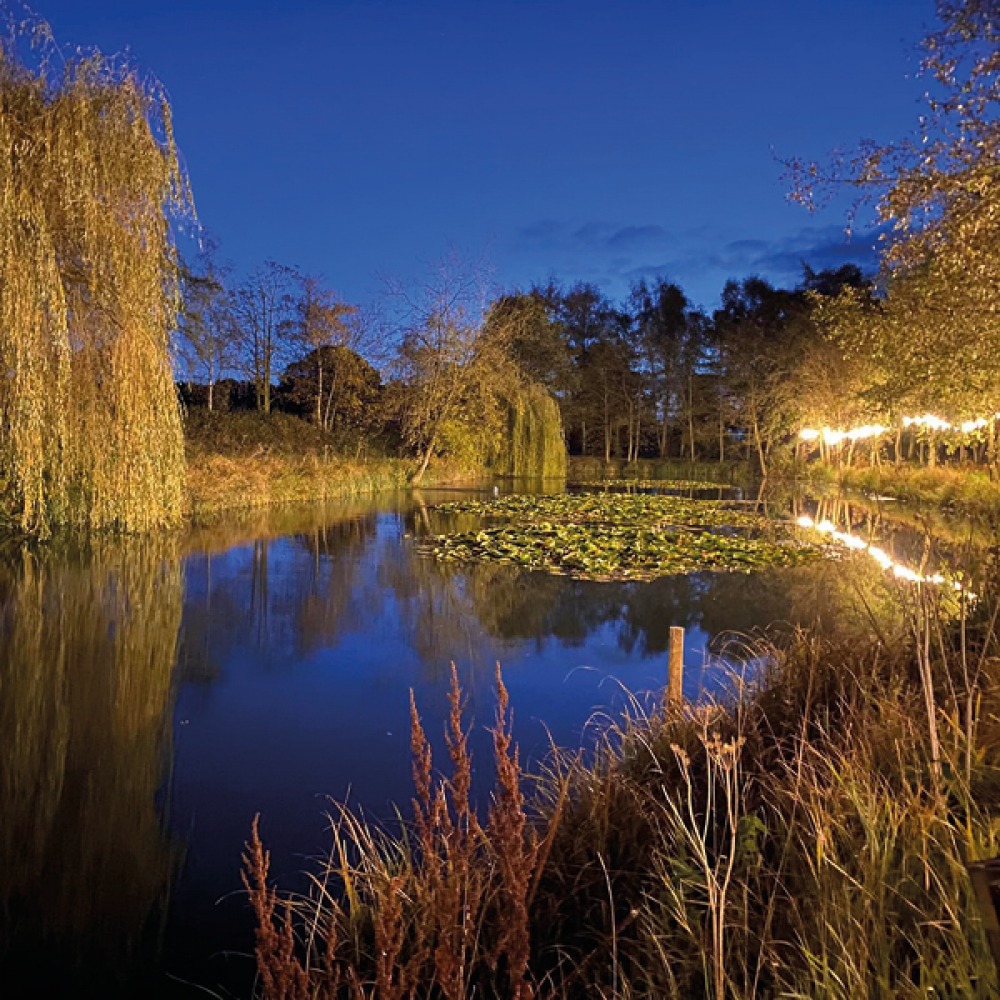
Pool Bridge Farm, York
Pool Bridge Farm is a privately-owned wild swimming spot around 15 minutes’ drive from York city centre. There are three lakes on the farm: the Monet Lake (so named for its lily pads), the Horseshoe Lake which is popular for training swims, and the M Lake which has an old shepherd’s-hut-turned-sauna and is aimed at families in the summer. Twinkly festoon lighting around the Monet Lake allows swimming to happen from 7am to 7.30pm year-round, and they also run additional Moon Swims to make the most of the light from the full moon and are planning a sunrise swim to welcome the summer solstice.
To book and find out more, visit poolbridge.co.uk
Falling Foss, Whitby
Falling Foss is an an enchanting waterfall nestled in an ancient forest near Whitby. The best way to visit the waterfall is via the May Beck and Falling Foss circular walking route (there should be a clear trail to follow through the woods from the Forestry Commission car park at May Beck). This route will also take you via The Hermitage, a fascinating cave dwelling that has been carved out of a solid boulder, and takes around an hour and a half. The path down to the waterfall is steep and can be slippery, so make sure you’re wearing good shoes and reward yourself with a stop at the Falling Foss Tea Garden on the way home.
Janet’s Foss, Malham
Beside’s being a magical spot for a wild swim, Janet’s Foss is also home to the eponymous queen of the fairies, Janet, who is said to live in a cave behind the waterfall (making her a sitting tenant of the National Trust which now owns the clearing). It partly owes its ethereal beauty to the lime-rich water, which has gradually deposited limestone beneath the waterfall, creating a pretty screen of moss-covered tufa. It’s about a three-mile round-walk from the National Park car park (you can print the route from the National Trust website) or you might choose the longer Malham Landscape Trail circuit to take in Malham Cove and Gordale Scar too (this can be found on the Yorkshire Dales National Park website).
nationaltrust.org.uk, yorkshiredales.org.uk
Living North Loves
Sea Swimming
King Edward’s Bay, Tynemouth
King Edward’s Bay is a delightful little beach enclosed by cliffs and grassy banks beneath the imposing shadow of Tynemouth Priory. RNLI lifeguards patrol during the summer months, making it a safer choice, but it is popular so you will definitely have plenty of company. Grab a hot coffee from Riley’s Fish Shack or warm up post-swim at Steam and Salt’s beachside sauna.
Cheswick Sands, Berwick
Cheswick Sands is one of Northumberland’s largest (and often quietest) beaches. Whilst you might not choose to stay in the water long enough to swim the length of it, on a clear day its panoramic views of Berwick to the north and Holy Island to the south make a majestic accompaniment to a post-swim flask of tea on the dunes. The dunes provide some shelter but it can be windy, making the beach popular with kite and wind surfers too.

Rumbling Kern, near Howick
This hidden gem doesn’t appear on Google maps but the closest searchable landmark is the neighbouring bathing house that Earl Grey built so his family could make the most of this beautiful spot. At low tide, the cove is revealed in all its glory, including a gorgeous tidal pool to take a dip in. You should be careful not to mistake the larger inlet for a tidal pool (‘rumbling’ refers to its choppy waters).
Slope Beach, Seaham
Slope Beach is a small, sheltered sandy beach within the harbour at Seaham. It is very popular with sea swimmers, but it isn’t patrolled by lifeguards so make sure you are confident that the conditions are right before wading in. Once the Dryrobes are on, it’s hard to beat the fish and chips from nearby Downeys (crucially, they have indoor seating) so you can warm up.
Beadnell Bay
The horseshoe shape of the sand on this stunning beach backed by sand dunes creates a natural harbour that is popular with water sports enthusiasts and swimmers alike. As there’s a chance you’ll be sharing your swim with boats, windsurfers and kitesurfers, making yourself extra visible is a good idea here. For a more peaceful swim, head south round the bay and away from the harbour where you’ll just have the sea birds (including oyster catchers, dunlin and sandpipers) for company.
Saltburn Beach
Saltburn Beach is a popular spot for surfers and swimmers alike, and it’s easy to see why: bordered by dramatic cliffs, and with a Victorian pier, it has clear waters stretching as far as the eye can see. You can usually make your way down the cliffs to the beach on the Saltburn Cliff Tramway, which is one of the oldest water-powered funiculars in the world, although sadly, after a recent fire, we’re crossing our fingers that it will be back up and running soon.
Hornsea Beach
The promenade along Hornsea’s sand and shingle beach might be a great place for a walk, but venture down toward the waves and you will be rewarded with a supremely fresh dip. This a slightly quieter beach than some of the swimming spots further up the coast, and perhaps this is why it is also known as a good place to see wildlife (even the occasional seal). Importantly, Hornsea’s water quality is consistently rated excellent, lifeguards are on hand in the summer, and the beach also holds a blue flag award.
Flamborough North Landing Beach
Situated in a small cove between magnificent white chalk cliffs, it’s hard to imagine a more idyllic setting for a dip than at Flamborough’s North Landing Beach. The beach itself is a mix of sand and pebbles, so remember to bring some flipflops and a flask of tea to take in the scenery with once you’re out of the water. It’s only a short way from here to Bempton Cliffs, and the bird life is fantastic, but bring a snorkel with you and you may even be rewarded with a glimpse of marine life too.
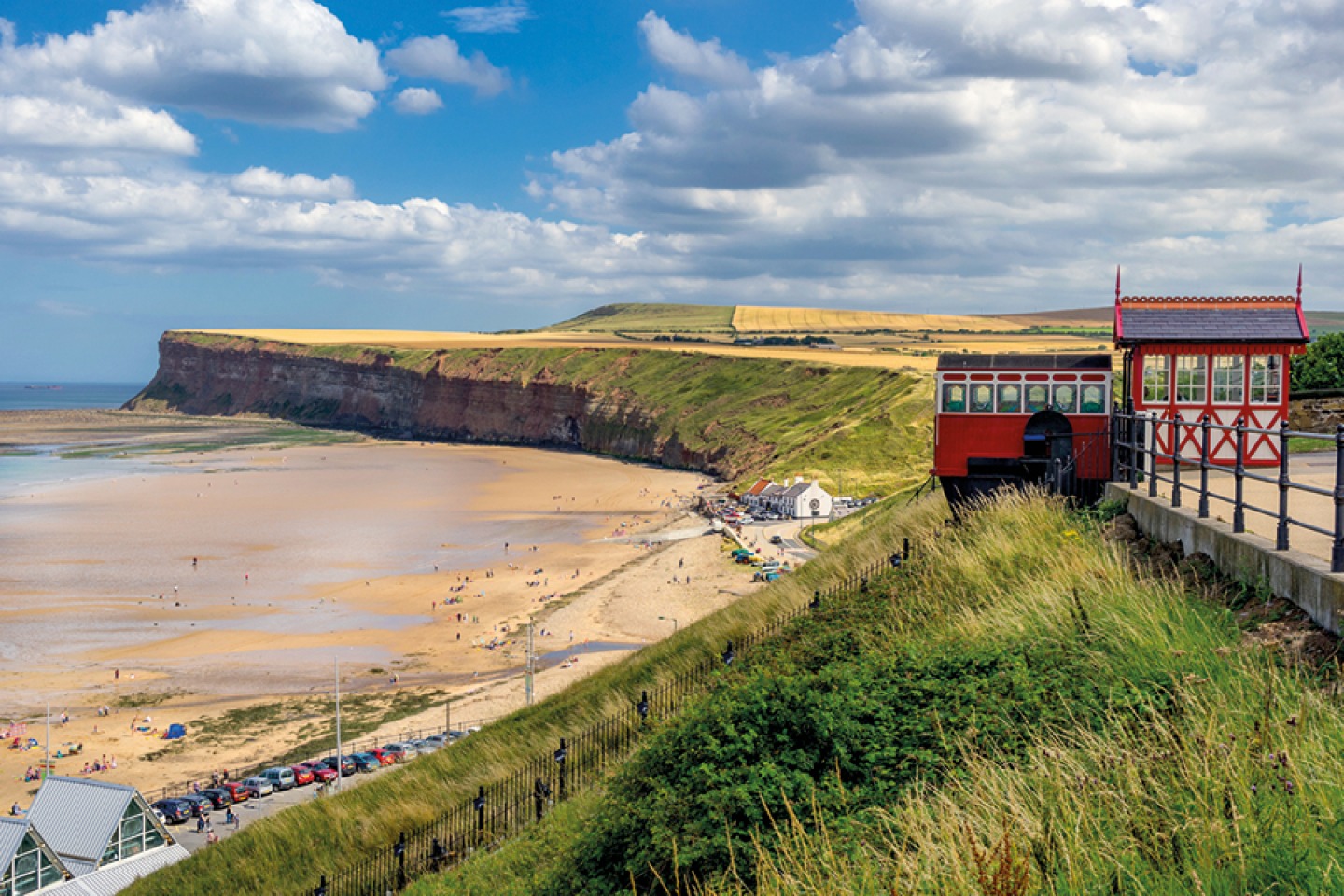
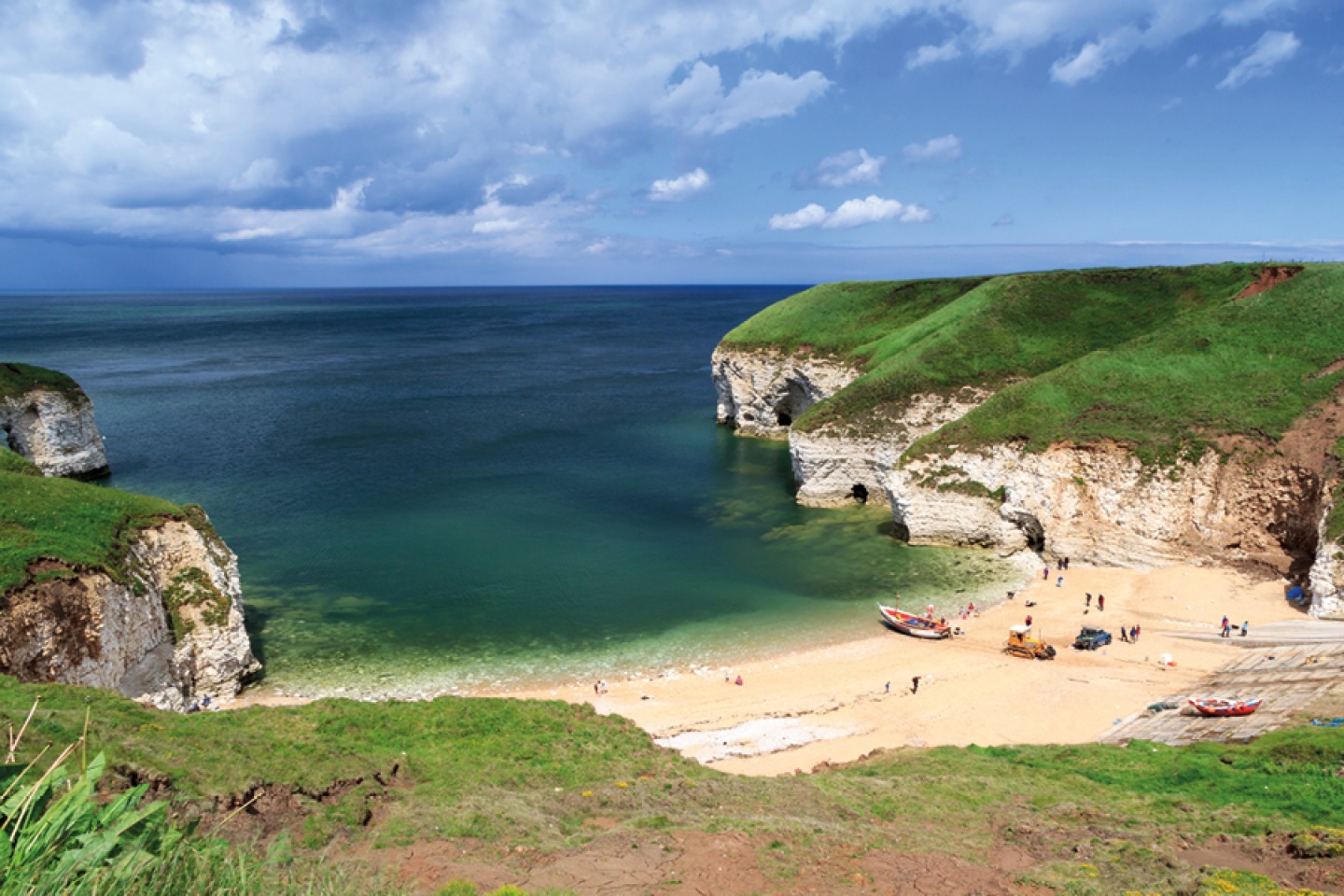
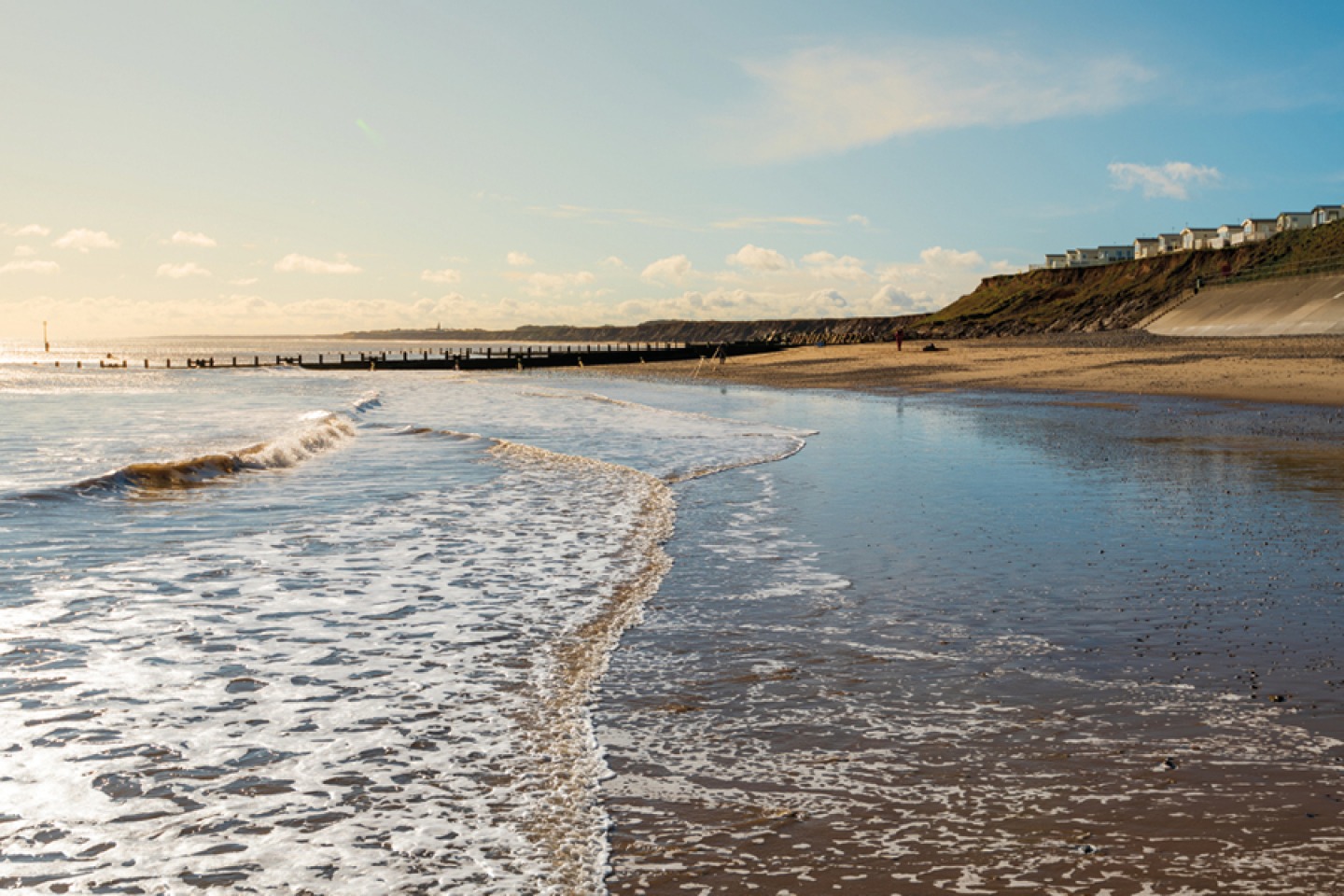
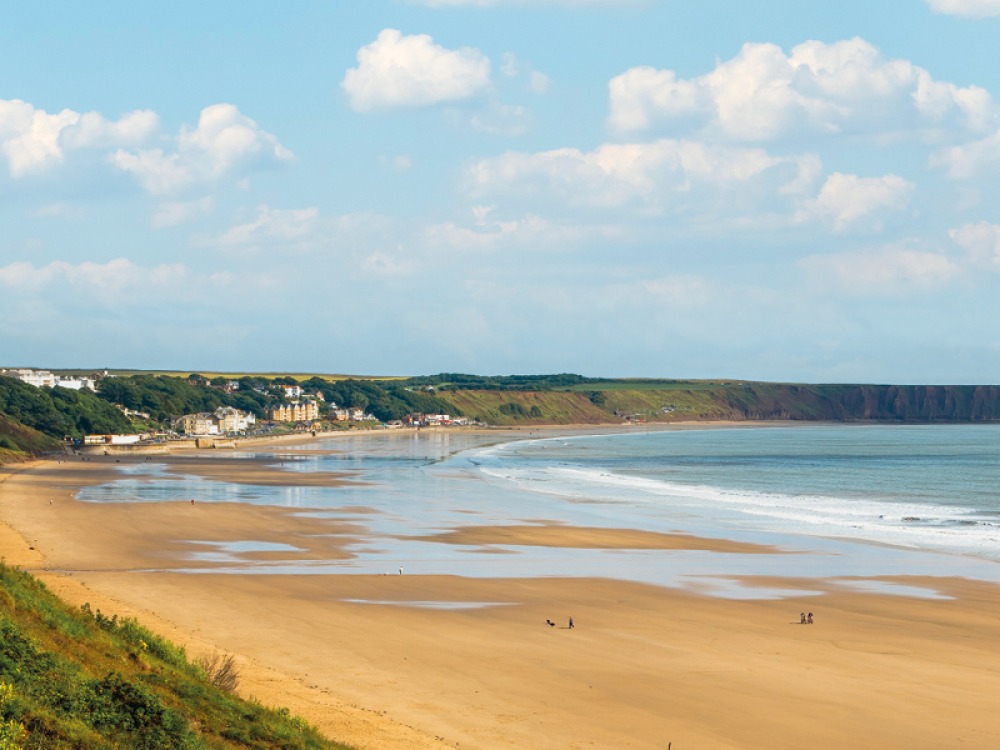
Whitby Beach
There are two beaches to swim from at Whitby, both of which are officially rated ‘excellent’ for their water quality. Westcliff is a buzzier spot, with colourful beach huts, deckchairs and donkey rides along the beach, while Tate Hill is a smaller, sheltered beach on the other side of the river. The main thing to bear in mind is that Westcliff has the benefit of lifeguards during the summer, so is the better option if you are wading out for the first time.
Filey Beach
Filey beach has miles of golden sand, and is usually a quieter spot to unwind than neighbouring Scarborough or Bridlington. In the summer months, it is also patrolled by RNLI lifeguards to give you that bit of extra reassurance when you’re getting in the water. If the weather is playing ball, this is a great place to while away a day exploring the rock pools at the north end of the beach, admiring the Sculpture Trail and beach chalets that line the promenade, or just drying out with a good book on the sand.
Withernsea Beach
As well as being a designated bathing beach, in 2023 Withernsea Beach sustained its Blue Flag award, putting it up there with the best of beaches globally for criteria like water quality, beach management and environmental education. If you have time to kill after your swim, why not head up to the top of Withernsea Lighthouse, which has panoramic views along the coast and a museum telling the story of the town’s maritime history, as well as its connection to an international film star?
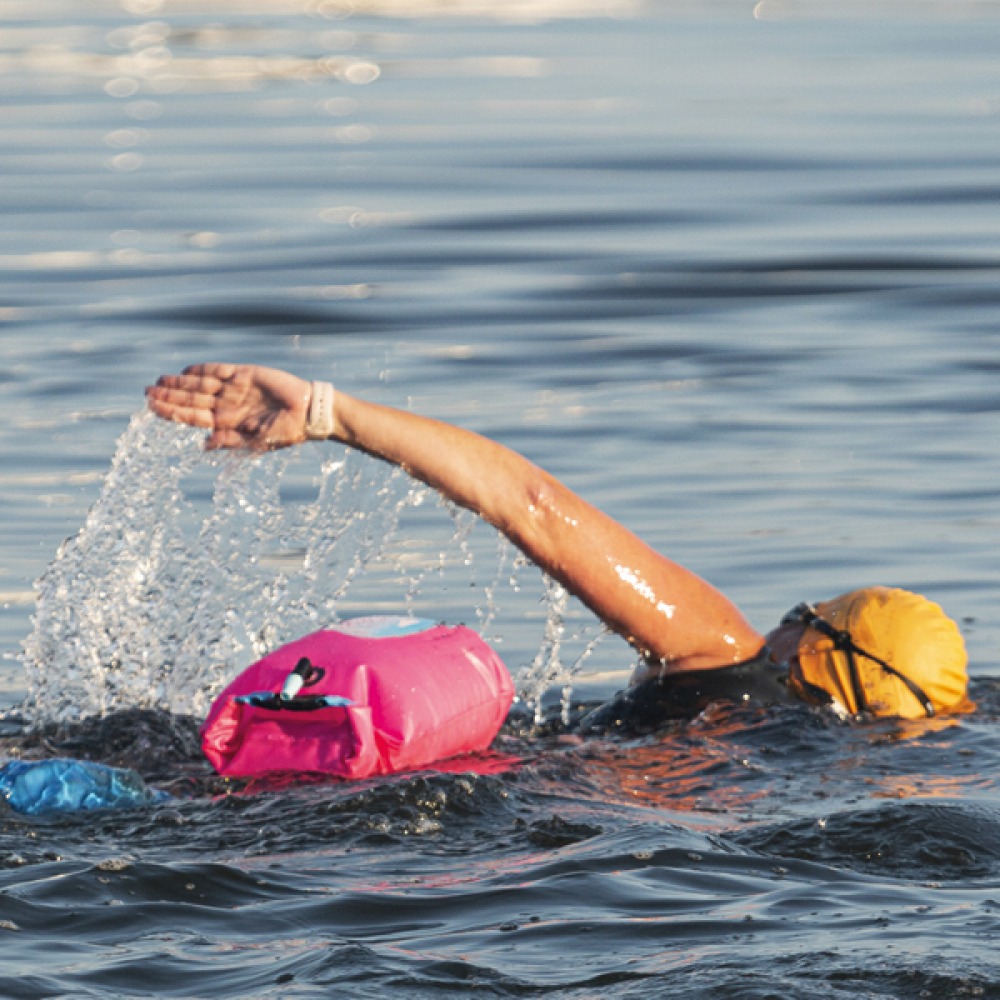
Swim Safe
Wild swimming is usually synonymous with cold water swimming (at least in the UK) and, while a bracing dip might be what you’re after, it’s important to prioritise safety. Temperatures below 12 degrees can be especially dangerous and people with heart conditions can be particularly at risk, so it’s important to take into account how experienced you are and consider a medical check-up before you take the plunge.
If you decide to go for it, here are a few tips to make your swim safer:
• Never swim alone, and keep an extra eye on weaker or less experienced swimmers.
• Enter the water gradually – jumping straight in is a definite no-no if you want to avoid cold water shock.
• Let someone at home know where you are planning to go and when you will be out the water, and bring a phone to let them know.
• Always plan how you are going to get out of the water before you get in.
• Sometimes the cold really starts to hit when you are out of the water. Always make sure you have a towel and a warm change of clothes with you.
• Avoid swimming in choppy waters, areas with a strong current, or on windy days.
• Don’t stay in the water too long. If you are swimming regularly, you can gradually increase your time in the water, but always play it safe to start with.
• Invest in a tow float for extra visibility and buoyancy.
• Don’t swim in quarries: their water is often much colder than other bodies of water.
• Wear a bright swim cap so that you can be easily seen.
• Wear a wetsuit!
For more information visit rnli.org.










